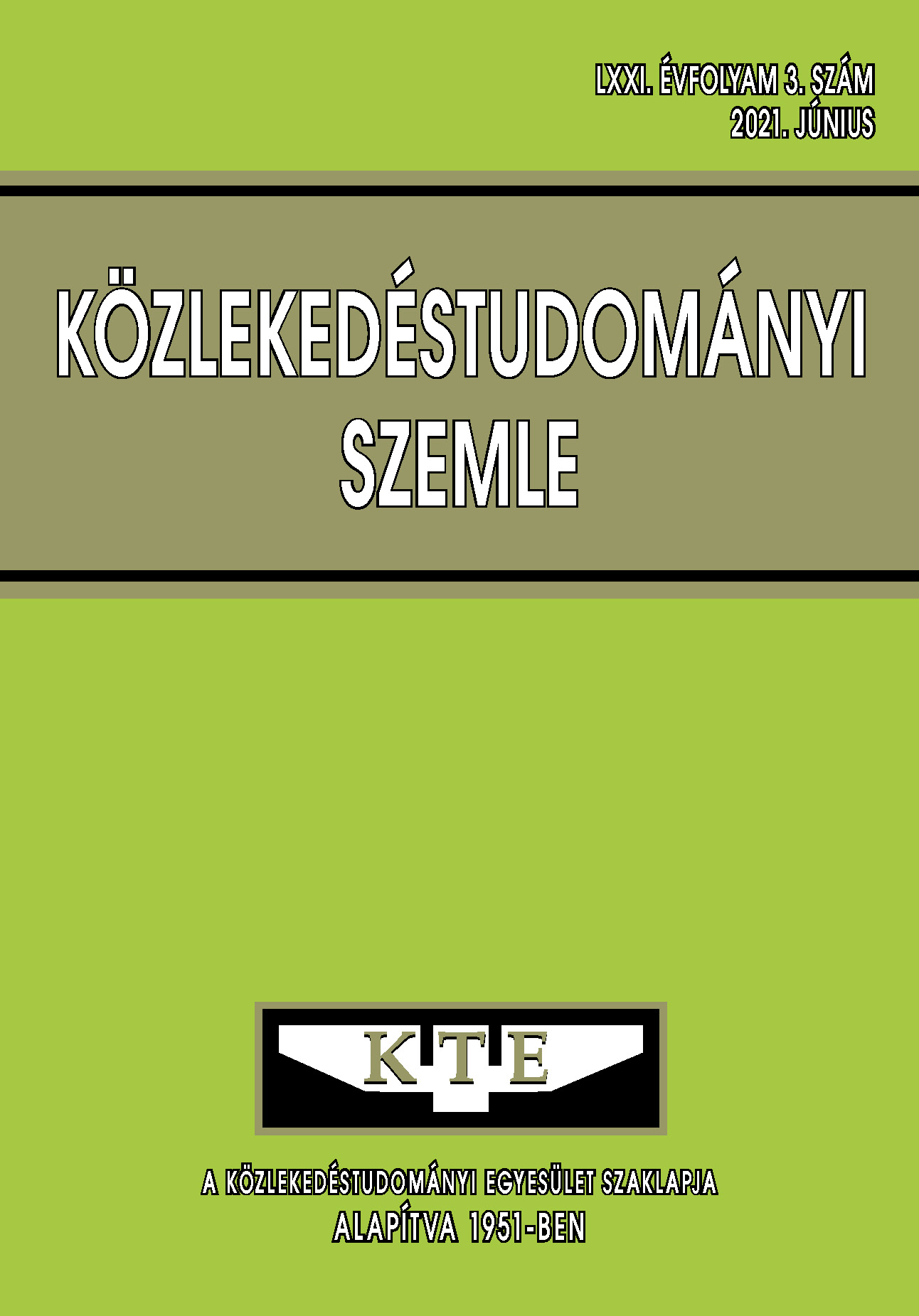Mixed reality development environment for self-driving cars
Abstract
During the development of self-driving cars, testing possibilities are rather limited, and carrying them out can be difficult and costly. The solution of this problem can be provided by the so-called mixed reality technology, i.e., the application of systems creating a mixed reality. These systems provide an opportunity to create an environment in which real self-driving cars can be tested in virtual traffic. Systems based on mixed reality can greatly assist the research and development of self-driving cars and can also serve as a basis for the shaping of validation procedures.
References
T. Derenda, M. Zanne, M. Zöldy, Á. Török, Automatization in road transport: a review, Production Engineering Archives, vol. 20, pp. 3–7, 09 2018. DOI: https://doi.org/f9vw
W. Huang, K. Wang, Y. Lv, and F. Zhu, Autonomous vehicles testing methods review, in 2016 IEEE 19th International Conference on Intelligent Transportation Systems (ITSC), Nov 2016, pp. 163–168. DOI: https://doi.org/ggh2p7
A. Dosovitskiy, G. Ros, F. Codevilla, A. Lopez, and V. Koltun: Carla - an open urban driving simulator, Eprint: 1711.03938, arXiv, 2017. https://arxiv.org/abs/1711.03938
Tass. (2019, Oct.) Prescan - simulation of adas & active safety (2019.2) https://tass.plm.automation.siemens.com/prescan
Vires. (2019, Oct.) VTD - Virtual Test Drive. https://vires.com/vtd-vires-virtualtest-drive/
Mathworks. (2019, Oct.) Matlab - Automated Driving Toolbox. https://www.mathworks.com/products/automateddriving.html
Y. Laschinsky, K. von Neumann-Cosel, M. Gonter, C. Wegwerth, R. Dubitzky, and A. Knoll, Evaluation of an active safety light using virtual test drive within vehicle in the loop, in 2010 IEEE International Conference on Industrial Technology, March 2010, pp. 1119–1112. DOI: https://doi.org/fs5rzc
C. Biurrun-Quel, L. Serrano-Arriezu, and C. Olaverri-Monreal, Microscopic drivercentric simulator: Linking Unity3D and SUMO, in Recent Advances in Information Systems and Technologies, Á. Rocha, A. M. Correia, H. Adeli, L. P. Reis, and S. Costanzo, Eds. Cham: Springer International Publishing, 2017, pp. 851–860. DOI: https://doi.org/f9vx
P. A. Lopez, M. Behrisch, L. Bieker-Walz, J. Erdmann, Y. Flötteröd, R. Hilbrich, L. Lücken, J. Rummel, P. Wagner, and E. Wießner, Microscopic traffic simulation using sumo, in 2018 21st International Conference on Intelligent Transportation Systems (ITSC), Nov 2018, pp. 2575–2582. DOI: https://doi.org/gfvjnh
J. Kaths, B. Schott, and F. Chucholowski, Virtual testing by coupling high fidelity vehicle simulation with microscopic traffic flow simulation, Conference: Autonomous Vehicle Test & Development Symposium 2018, 06 2018.
J. Kaths and S. Krause, Integrated simulation of microscopic traffic flow and vehicle dynamics, in IPG Apply & Innovate, 09 2016.
F. Michaeler and C. Olaverri-Monreal, 3D driving simulator with VANET capabilities to assess cooperative systems: 3DSimVanet, in 2017 IEEE Intelligent Vehicles Symposium (IV), June 2017, pp. 999–1004. DOI: https://doi.org/f9v3
T. Tettamanti, M. Szalai, S. Vass, and V. Tihanyi, Vehicle-In-the-Loop test environment for autonomous driving with microscopic traffic simulation, in 2018 IEEE International Conference on Vehicular Electronics and Safety (ICVES 2018), Madrid, Spain, 12-14. Sept. 2018, pp. 295–300. DOI: https://doi.org/f9v4
Wegener, A., Piórkowski, M., Raya, M., Hellbrück, H., Fischer,S., Hubaux, J.P.: Traci: An interface for coupling road trafficand network simulators. In: Proceedings of the 11th Commu-nications and Networking Simulation Symposium, CNS ’08, pp. 155–163. ACM, New York, NY, USA (2008). DOI: https://doi.org/c44qw8
M. Horváth, Q. Lu, T. Tettamanti, A. Török, Zs. Szalay, Vehicle- In-The-Loop (VIL) and Scenario-In-The-Loop (SCIL) automotive simulation concepts from the perspectives of traffic simulation and traffic control, Transport and Telecommunication Journal, vol. 20, pp. 153–161, 04 2019. DOI: https://doi.org/f9v5
(2019, Oct.) Unity user manual (2019.2) https://docs.unity3d.com/Manual/XR.html
A. Dua, N. Kumar, and S. Bawa, A systematic review on routing protocols for vehicular ad hoc networks, Vehicular Communications, vol. 1, p. 33–52, 01 2014. DOI: https://doi.org/f9v6
T. Thomsen and P. R. Mai, ASAM OpenSCENARIO - List of feauters and requirements, Jan. 2019.
Articles published electronically are open access (OJS), freely available online and can be downloaded. Authors of articles are not charged any publication or publishing costs (APC). Users have the right to read, download, copy, print, and search the articles, or share the full text with a link.
Authors must declare that their submission has not been previously published in another journal, that financial support has been acknowledged, and that the list of references is complete and accurate, including specification of URLs and DOIs (if available). When submitting a draft article, each author approves the submitted version. Authors guarantee that the article is their original work. Authors are required to participate in the peer review process, follow the advice of reviewers, meet the prescribed deadlines, and, if any, withdraw the submission or correct errors.
All submitted articles are subject to peer review, where the editors request an independent evaluation from at least one expert, ensuring that the reviewer(s) have no conflicts of interest with the authors. The final decision is made by the Editor-in-Chief, who takes into account the evaluations and the suggestions of the editors. The editors and reviewers treat the submission confidentially.
The publisher and editors are committed to maintaining high ethical standards and to preventing publications that involve research misconduct. They follow the COPE guidelines on such ethical issues.
The authors retain copyright and grant the journal the right of first publication under the Creative Commons License (https://creativecommons.org/licenses/by-nc-nd/4.0), which allows others to share the work, while acknowledging the authorship of the work and the first publication in the journal.
The journal archives all published articles, and the journal's owner, the Hungarian Society of Transportation Sciences, will continue to operate the database even if the journal ceases to be published.















